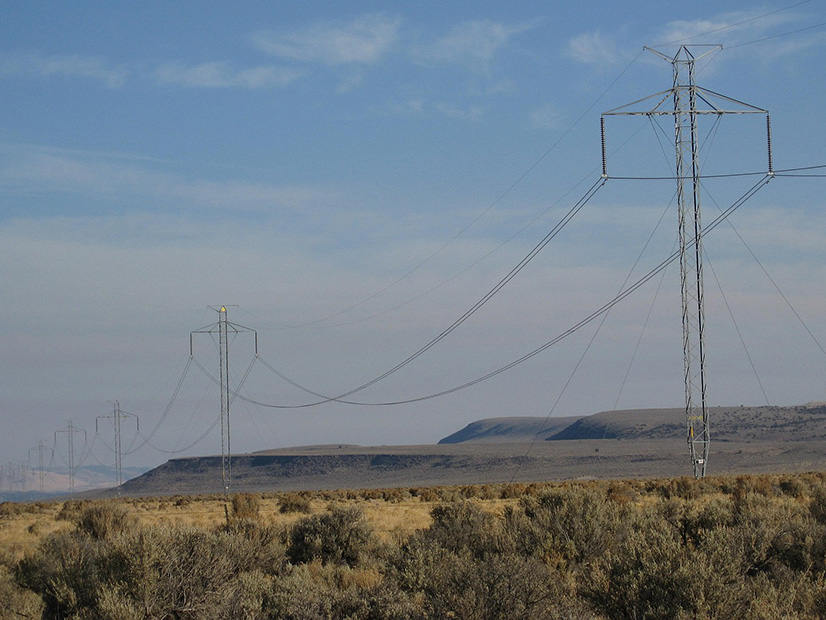
FERC on Thursday approved CAISO tariff revisions that will increase the penalty prices associated with the relaxation of intertie transmission constraints in the ISO’s market processes (ER22-1246).
In its March 10 filing requesting approval for the changes, CAISO explained that the tariff amendments would affect two of its market processes: the residual unit commitment (RUC) process, which occurs in the day-ahead market, and the hour-ahead scheduling process (HASP), which takes place in the real-time market.
CAISO said that the amendments fix a defect in those processes, preventing the ISO’s market optimization software from inaccurately representing the supply available to meet demand and reducing the reliability risk of overscheduling on the interties during tight supply conditions.
In the filing, CAISO explained that the ISO’s market optimization software schedules and prices resources in two successive runs in both the day-ahead and real-time markets. The first is the scheduling run, which produces resource schedules and “involves clearing bids, enforcing the priorities of self-schedules, and potentially relaxing constraints.” Following that, the pricing run produces the locational marginal prices used in settlements.
CAISO said the software its employs to optimize its day-ahead and real-time markets uses “configurable market scheduling and pricing parameters to reach a feasible solution and set appropriate prices for the market in instances where effective economic bids and self-schedules are insufficient to reach a feasible solution.”
To accommodate those situations, the market parameters used in both the day-ahead and real-time include administratively determined “penalty” prices that apply when constraints enforced by the CAISO market are relaxed or violated. When the ISO relaxes a constraint, its market software calculates scheduling run LMPs based on penalty prices, although the penalty prices — and their associated LMPs — at issue in the filing are only used in the scheduling runs of the RUC and HASP to ensure constraints and not used in market settlements.
CAISO’s market software clears economic bids and self-schedules for imports at interties based on a supply curve. If the LMP in the scheduling run is lower than the LMP for an economic import bid, that import bid will not clear the market. The same condition applies to import self-schedules at an intertie: it will be cut if the LMP is lower than an applicable penalty price used for adjusting the import self-schedule, “and because penalty prices for import self-schedules are negative, the LMP must be more negative than the import penalty prices for the import self-schedule not to clear,” FERC noted.
Over the past two years, CAISO has learned that when faced with having to relax both the power balance constraint (which ensures that supply is balanced with demand) and an intertie transmission constraint to reach a feasible market solution, the resulting LMPs for imports at the intertie can be too high relative to penalty prices to avoid the overscheduling of imports on that intertie.
The ISO said it observed the issue in the RUC at the Malin and Nevada-Oregon Border interties on Aug. 19, 2020, and again in the HASP at those same interties on July 9, 2021. In both instances, the region was dealing with extreme weather-related events.
“CAISO explains that overscheduling creates issues for both reliability and market efficiency because when the market software clears intertie schedules that exceed the intertie scheduling limit, CAISO operators must then manually curtail those excess intertie schedules after the market clears,” FERC noted in its order. “CAISO asserts that overscheduling poses an especially large reliability risk during tight supply conditions and when overscheduling occurs, the market clearing process accounts for import supply that is not actually available, resulting in inaccurate market signals and an inefficient market solution.”
Flexible Parameters
To prevent the problem from recurring, CAISO proposed to increase the scheduling parameter values for intertie transmission constraint relaxation in both the RUC and the HASP at a level high enough that “even when the power balance constraint and the intertie transmission constraint are relaxed at the same time, they will produce an LMP that reflects the scarcity of available intertie capacity,” the commission said.
The ISO’s proposal includes:
-
-
- increasing the scheduling parameter for intertie transmission constraint relaxation in the RUC from $1,250/MWh to $3,200/MWh when the soft energy bid cap of $1,000/MWh is in effect;
- increasing the scheduling parameter in the RUC from $1,250/MWh to $6,400/MWh when the hard energy bid cap of $2,000/MWh is in effect;
- increasing the scheduling parameter for intertie constraint relaxation in the real-time market from $1,500/MWh to $2,900/MWh when the soft bid cap is in effect and from $3,000/MWh to $5,800/MWh when the hard cap is in effect.
-
“CAISO has performed counterfactual simulations showing that, if the tariff revisions had been in place when the overscheduling at the Malin and NOB interties occurred in the summers of 2020 and 2021, no overscheduling would have occurred,” the ISO said in its filing.
In approving the changes, the commission agreed with CAISO that previous FERC rulings stated that the scheduling parameters were “flexible” parameters that the ISO could propose to revise as needed. The commission also agreed that the revised parameters should help prevent overscheduling at the interties and boost reliability and market efficiency, especially in the face of tight supplies.
“As CAISO explains, preventing overscheduling when both the power balance constraint and intertie transmission constraints are relaxed will prevent the need for manual operator intervention to curtail excess intertie schedules under these conditions,” the commission concluded.
In a separate concurrence, Commissioner James Danly urged his fellow commissioners to initiate a Section 206 investigation “to fulfill our statutory duty to ensure just and reasonable rates,” reiterating his previously stated concerns about the California electricity market.
“The CAISO market has been in a perpetual state of emergency since it experienced rolling blackouts in August 2020, largely because of insufficient generation resources, distorted prices and an over-reliance on less reliable renewable resources combined with out-of-market subsidies in support of the same,” Danly said.


